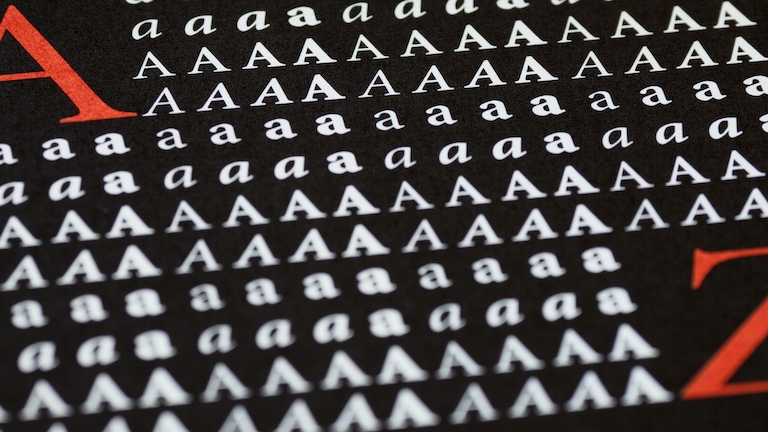
UXpect me to talk? How to improve your product by involving your UX writer from day one
We explore the role of the UX writer — and how to make the most of their skills throughout the design process
Author
You may have spotted a UX writer in the wild before — flighty creatures that flutter between teams, dipping into spreadsheets, copy decks or design documents as they sing about title case, contractions and other… well, arcane topics.
Most of us would agree that it’s good to have somebody to “look after the words” — but where and when should a UX writer get involved in the design process?
Short answer: everywhere — and early!
The latecomer to the design party
So what’s a UX writer? Like interface designers, UX writers build patterns that help improve usability and learnability. UX writers typically create re-usable copy components like field labels, empty states, CTAs, errors, hint text, toasts, headers and steppers — much like UI designers re-use visual components to build a user interface. Instead, UX writers use words as a toolset for solving design problems.
You should include your UX writer in every phase in the product development cycle — from your earliest conceptual designs to prototyping, detailed design, user testing and development.
If you’re lucky enough to have a UX writer in your organisation, it’s likely that they support multiple teams at the same time. Sadly, that may never change, because UX writers traditionally provide their input very late in the design process.
But with a little planning, your UX writer can get involved earlier, add more value — and arguably spend less time fretting over the copy. Here’s how.
1. Research and strategy
It’s worth asking your UX writer to compile a content strategy that helps guide the design direction of your product. It doesn’t need to be a vast or complex document — it could simply be a page or illustration that answers a few simple questions, such as:
What type of user journey are you designing?
Is the journey an easy, low-impact day-to-day task that only requires brief instructions? Or is it a complex, high-impact, and unique journey that requires more carefully crafted conversations and hand holding?
What emotional states do you need to factor in?
Conduct some research on potential pain points and how copy could help mitigate them. What are your users’ literacy levels and knowledge of the product you’re designing? What words should you use or avoid? Decide early!

Different types of user journeys require different approaches to copy.
Keep in mind that content strategy is part of the broader experience strategy. Everybody in the team — project leads, product owners, designers, developers and QA — should understand (and agree to) the content strategy the UX writer will follow.
2. Conceptual design and prototyping
Conceptual design doesn’t mean incomplete design. A conceptual design that contains only lorem ipsum is a missed opportunity, because it doesn’t explore what problems your UX copy could solve — or create. Have your UX writer spend time with your designers, whether it’s during a co-design session, or scribbling draft copy on a board during a brainstorming session.
And don’t worry — at this stage copy doesn’t need to be perfect, or even particularly good. But having it in your conceptual designs and prototypes will help you determine what works (and what doesn’t) faster. An hour that your UX writer spends in conceptual design can save days of work later in the design process.
An hour that your UX writer spends in conceptual design can save days of work later in the design process.
3. Detailed design
UX writers typically get involved once the detailed UI design is more or less done. However, you’ll likely build a more cohesive product if your UX writer gets the chance to write up their copy before any designs are signed off. Why? Because the simplest, clearest copy in the world won’t do its job unless the user finds and consumes it at the right stage of the journey. To that end, sharing your rough design documents with your UX writer will help you settle on the ideal hierarchy, timings and information architecture.


Consistent UX copy input throughout the design process will add more value to your product (and help keep your writer sane).
Furthermore, many digital products are reproductions of human conversations or analogue events, such as buying a car or filing a document. Your writer will make your digital product feel more human, so be sure to include them in your detailed design phase.
The simplest, clearest copy in the world won’t do its job unless the user finds and consumes it at the right stage of the journey.
4. User testing
All designers have blind spots, and UX writers are no different. Copy that seems simple, clear and engaging to writers can fail at first contact with reality — and take your entire flow with it.
That’s why it’s often a good idea to have your UX writer observe a few of your testing sessions, to help pinpoint and solve copy-related problems. It’s likely that your UX writer will already have some idea of which words, concepts and interactions may prove to be problematic. The sooner you identify and solve these issues, the better. But to do it, they need to see the copy fail.
5. Development and QA
Beware! Bad copy — whether it’s typos, nasty legalese, or confusing edge-case error messages — can easily end up in your shipped product if you’re not careful.
A talented QA team that knows what to look for can help reduce such incidents, but your UX writer should also keep an eye on your product during development and QA. Mistakes can and will creep in, particularly if your designers and developers work in parallel, rather than hand off completed, proofread and signed-off designs for development.
Since we’re on the topic — some UX writers create separate copy decks, while others keep their final copy in the detailed design document. While copy decks have their merits, we lean towards the latter approach. Why? Because UX copy is a design component. UX copy should live in the design, not in a separate space that’s divorced from the visual elements it inhabits. Sure, this approach can occasionally lead to version control issues, but it’s a worthwhile trade-off.
UX copy is a design component — so it should live in the design, not in a separate space that’s divorced from the visual elements it inhabits.
More ways to squeeze value out of UX copy
In this post we focused primarily on UX copy in the design process, but there are a few other areas outside of the product development lifecycle where your UX writer can add value to your organization:
Integrate UX copy into your design system
If copy is a design component, then it belongs in your design system too. Add copy component templates and examples that illustrate how designers should structure UX copy.
Create and share UX copy guidelines
Your UX writer should create a UX copy style guide that describes high-level concepts like voice and tone, right down to more granular guidelines like capitalization, formatting and component structure.
Educate the team, including stakeholders
Anybody remotely involved in product development should understand how UX copy works. Ask your UX writer to run a workshop to demonstrate the importance of their craft.


